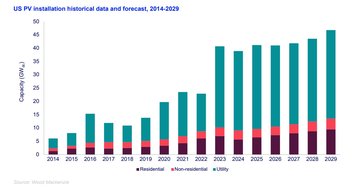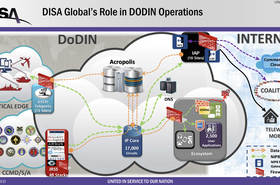The Utilities for Net Zero Alliance (UNEZA) has announced plans to invest more than $116 billion annually in clean power generation and power system grid infrastructure globally in the coming years.
The UNEZA consortium comprises 39 utility and energy companies, including Octopus Energy, Hitachi Energy, e.on, Siemens, Schnieder Electric, Etihad Water and Electricity, Masdar, Engie, Dubai Electricity and Water Authority, and EDF Renewables.
The consortium was launched at COP28 under the guidance of the International Renewable Energy Agency (IRENA) and the UN Climate Change High-level Champions.
The companies will aim to achieve a target of 849GW of renewable energy capacity by 2030; an increase of 2.6 times relative to 2023. Other targets include efforts to modernize and expand grid infrastructure.
Of the total investment planned and committed in the coming years, 48 percent targets transmission and distribution infrastructure.
“This announcement shows that the utility community is serious about the energy transition and serious about its commitment to addressing bottlenecks through cooperation and dialogue. If we are to collectively triple renewables capacity by 2030 in line with the COP28 outcome and achieve net zero by 2050, we need robust and resilient supply chains across the full power system value chain,” said Jasim Husain Thabet, co-chair and founder of UNEZA.
“Lead times for key power system equipment such as transformers, for instance, can take years – presenting a threat to our ambition. The message to suppliers and policymakers is that we need partnership and farsighted strategies in this critical element of the transition.”
US solar industry to install 250GW in five years
The US solar industry is on track to install 250GW of solar energy in the next five years.
The US solar industry has already installed 9.4GW of new electric generation capacity in Q2 2024, according to a report by the Solar Energies Industries Association and Wood Mackenzie.
In the two years since President Biden signed the Inflation Reduction Act into law, the solar industry has added 75GW of new capacity to the grid.
The figure represents more than 36 percent of all solar capacity built in US history.
The Inflation Reduction Act, signed in August 2022, was the largest climate and energy spending package in US history. The bill allocated $370 billion to support renewable energy buildout.
It also mandates a nationwide reduction of carbon emissions by around 40 percent in 2030.
“The solar and storage industry is turning federal clean energy policies into action by rapidly creating jobs and powering economic growth in all 50 states, particularly in battleground states like Arizona, Nevada, and Georgia,” said Abigail Ross Hopper, SEIA president and CEO.
The report adds that growth was not even across all sectors. The utility sector had its strongest Q2 on record, with 7.5GW of solar capacity installed, representing 59 percent year-over-year growth.
In Q2 2024, 7.7GW of new utility-scale projects were contracted, representing a 23 percent year-over-year decline.
The report forecasts that 186GW of new utility-scale solar will come online by 2029.
However, the residential solar market experienced its lowest quarter in nearly three years, only installing 1.1GW.
This is largely attributed to policy changes in California. Last year, the state made up over 30 percent of residential solar and is now forecasted to see a drop of 41 percent compared to 2023.
The residential sector is still expected to grow by 14 percent overall in 2025 and the commercial solar sector saw an increase of 6 percent year-over-year growth in Q2, with 877MW installed in H1 2024.






